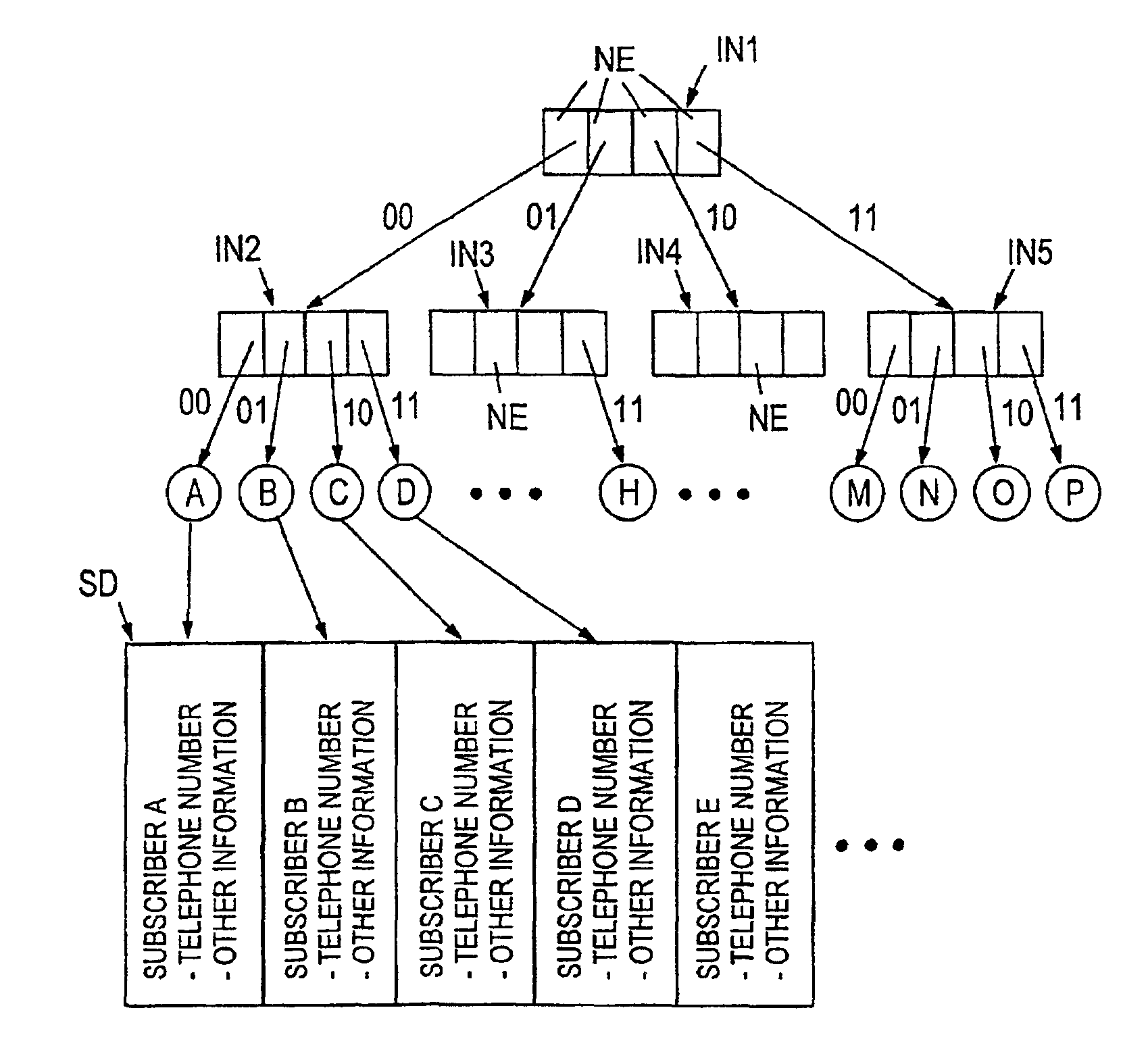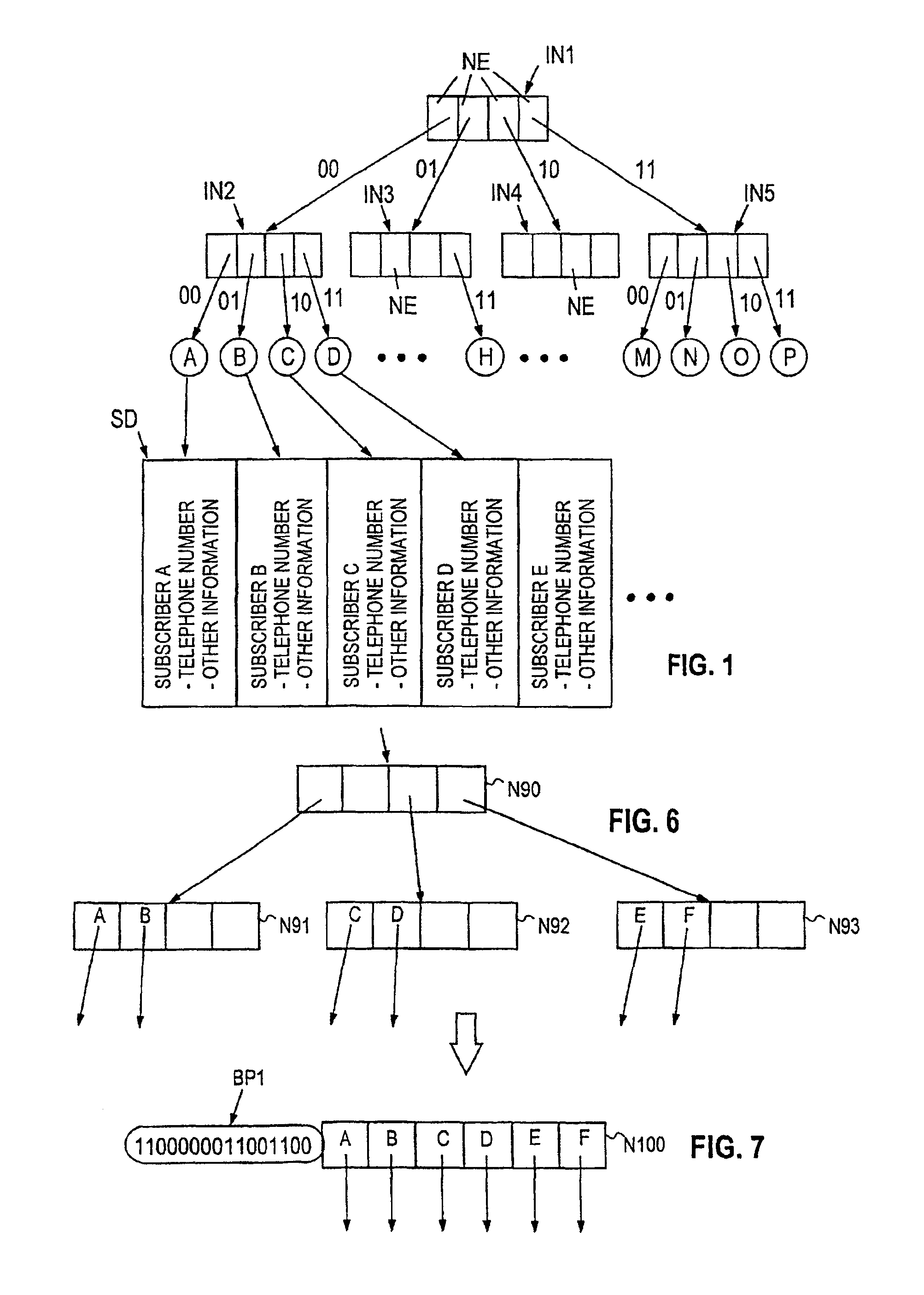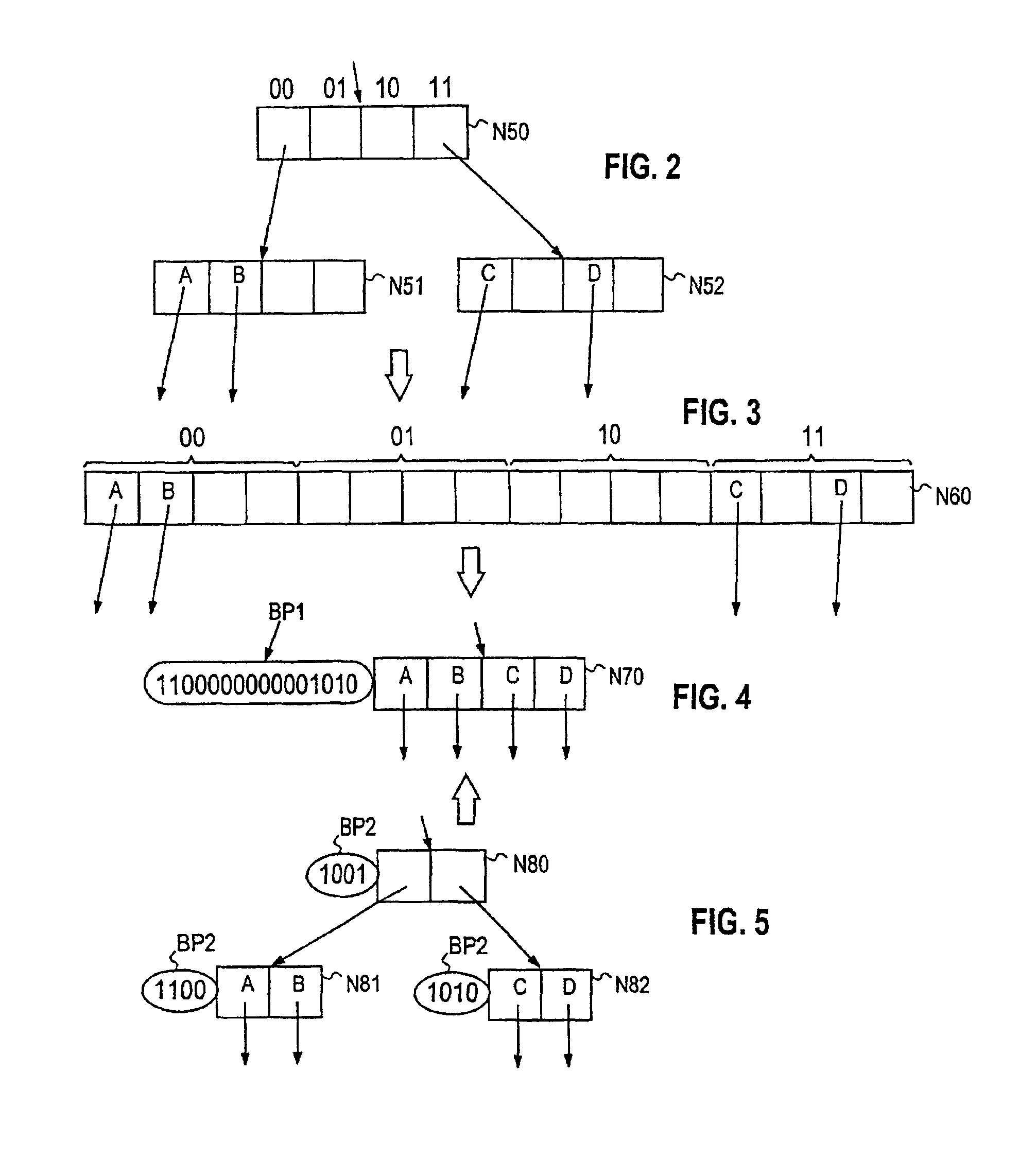Compression of nodes in a trie structure
a trie structure and compression technology, applied in the field of memory implementation, can solve the problems of reducing the performance advantage, reducing the depth and storage space occupancy of the functional structure, and reducing the depth and storage space occupancy
- Summary
- Abstract
- Description
- Claims
- Application Information
AI Technical Summary
Benefits of technology
Problems solved by technology
Method used
Image
Examples
Embodiment Construction
[0030]In order for it to be possible to achieve an optimum combination in view of memory retrievals, storage space occupancy and copying performed in connection with updates, compression is performed in the trie structure in such a way that one compressed node is formed from the quad node and its child nodes by first replacing the quad node and its child nodes by one node of size 16, which is followed by compression of the new node in which all nil pointers are deleted therefrom. This latter compression can be performed in a known manner, as will be described hereinafter.
[0031]The selection of a quad node as the node size to be used in the structure is an essential condition for maximum benefit to be gained from the method of the invention in a functional structure. It can namely be shown that the average storage space occupancy of trie nodes in an n-ary trie (with even key distributions) have minima at values n=2 and n=4. When the value n=4 is selected from these values, the depth ...
PUM
 Login to View More
Login to View More Abstract
Description
Claims
Application Information
 Login to View More
Login to View More - R&D
- Intellectual Property
- Life Sciences
- Materials
- Tech Scout
- Unparalleled Data Quality
- Higher Quality Content
- 60% Fewer Hallucinations
Browse by: Latest US Patents, China's latest patents, Technical Efficacy Thesaurus, Application Domain, Technology Topic, Popular Technical Reports.
© 2025 PatSnap. All rights reserved.Legal|Privacy policy|Modern Slavery Act Transparency Statement|Sitemap|About US| Contact US: help@patsnap.com



